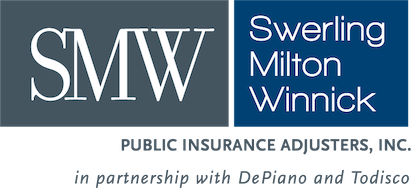Builders, developers and businesspeople who “flip properties” are accustomed to taking chances. After all, the very nature of the real estate renovation business is speculative. So, they’re comfortable carrying some risk.
That doesn’t mean these risk takers should take unnecessary risk, especially when their investments are on the line. And yet, when it comes to their “Builder’s Risk” coverage – the insurance that they are required to take out for such construction projects – most builders are dangerously exposed.
Builder’s Risk policies are more expensive than your standard homeowners or commercial policies. They also have to be paid in full up front. Within the Builder’s Risk policy are four types of coverage you must have in adequate amounts if you want to protect your construction investment. There are other coverages in a Builder’s Risk policy. However, these four are the coverages we commonly see being deficient in value or not being included at all.
These critical coverage types are for:
- Usable existing structures;
- Soft costs;
- Ordinance or Law – Code; and
- Debris Removal
Let’s take a look to understand what you really need.
Usable Existing Structure
This covers anything that, in the course of your renovation, will remain as a permanent part of the building. Suppose a developer buys a 3-family house for renovation, and plans to keep the building’s framing, windows and roof. This developer needs to look at the “Usable Existing Structure” section and elect coverage for every part that will not be renovated. Let’s say the value of the items that won’t be touched – the framing, windows and roof – totals approximately $300K. That’s the amount of Usable Existing Structure coverage the developer should carry. What we often see, however, are developers carrying coverage that is substantially less than what’s needed. Such a low limit of Usable Existing Structure coverage leaves the developer greatly underinsured. In the event of a bad fire or other property loss, he or she will be out of pocket to replace the framing, windows and roof.
Soft Costs
Soft costs refer to indirect construction expenses, such as: interest on money borrowed to finance construction; advertising and promotional expenses; real estate taxes and assessments; architectural or engineering fees; and costs resulting from the renegotiation of your leases. Tick off the boxes for each of the areas you might need. Most builders are way underinsured for soft costs, and many don’t have coverage for them at all. This can be disastrous if a property loss causes a 12-month delay on a project, as the builder will be totally out of luck being compensated for the project’s carrying costs.
Code
If your building burns down, and the city determines the rebuilt structure must meet current requirements for code and other zoning, have the right coverage in place or face prohibitive costs to get this done. Remember – if you were going to keep the existing framing, you might be grandfathered in and aren’t required to upgrade the framing. A fire that destroys the framing may have the building department require you to comply with the current codes where you wouldn’t have had to before the fire.
Debris Removal
Simply put, this covers the costs associated with removing debris after a loss (i.e., “demo”). Under most builder’s risk policies, the insurance company will cover debris removal costs up to either $25K or 10% of the total loss paid – whichever is greater. Consumers may purchase an additional dollar amount of debris removal coverage, but oftentimes do not take advantage of this option. This is unwise, because debris removal costs can quickly spiral well past either the $25K or 10% limits. In one recent claim we handled, for example, the city deemed the building unsafe and brought in their own emergency demo contractors to get it done immediately, which drove debris removal costs to $300K. This went well beyond the insured’s coverage limits. Developers: do your due diligence in this important insurance area.
Get Yourself Covered
Builders have risk in their DNA, but they also have a desire to complete successful jobs. Don’t take a risk when it comes to your insurance coverage. Make sure the amount of coverage you carry is sufficient to replace what’s needed so you don’t have to pay out of pocket.




